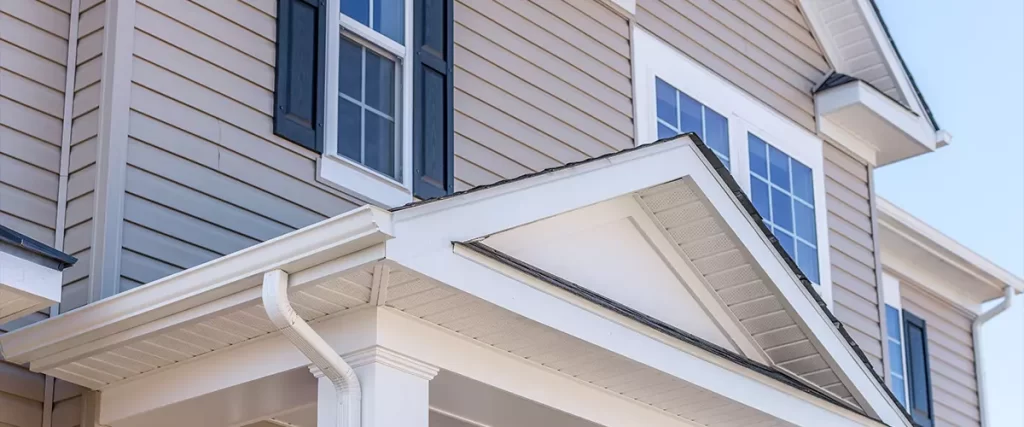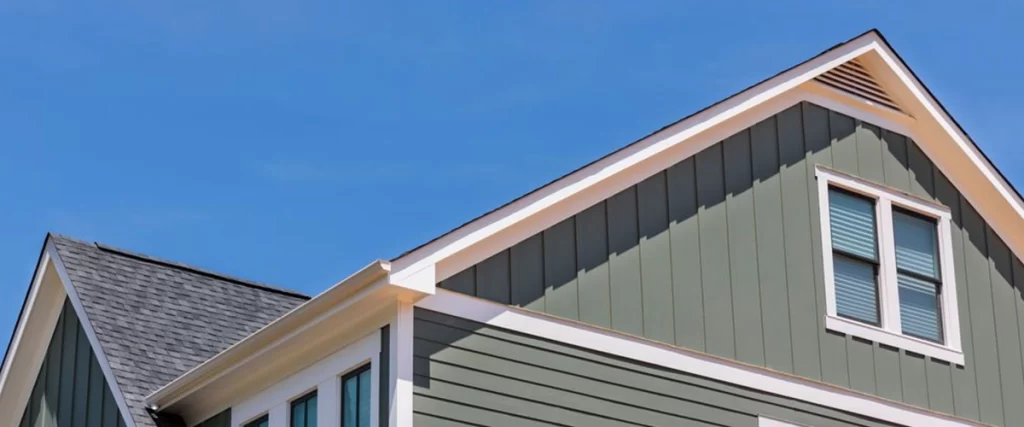Thinking about a fresh, durable look for your home’s exterior in the Omaha area? James Hardie fiber cement siding has become a go-to choice for homeowners who want long-lasting curb appeal without the constant upkeep of wood.
It delivers the classic lines people love, the toughness our weather demands, and a wide range of styles and colors that feel at home on everything from a Craftsman bungalow to a modern farmhouse.
Below is a clear, homeowner-friendly guide to what James Hardie siding is, how it’s finished, what influences cost, and how it stacks up against other cladding options.
What Is James Hardie Fiber Cement Siding?
Fiber cement siding is a blend of Portland cement, sand, and cellulose fibers formed into boards and panels, then cured for strength and dimensional stability. That formula gives you the look of wood without many of its headaches.
What you can expect from Hardie siding:
- Excellent durability against rot, moisture, and insects
- Strong performance in freeze-thaw cycles, wind, hail, and blazing sun
- Fire resistance that outperforms many other siding materials
- Crisp profiles in lap, panel, and shingle looks, available in wood-grain or smooth textures
Simple Comparison Snapshot
| Criteria | James Hardie Fiber Cement | Vinyl | Real Wood |
| Day-One Cost | Mid to High | Low to Mid | Mid to High |
| Maintenance | Low | Low | High |
| Durability (Moisture/Insects/Impact) | Excellent | Fair to Good | Good with vigilant upkeep |
| Repaint/Refinish Cycle | Long intervals | Not painted | Frequent |
| Style & Texture Realism | High (smooth or wood-grain) | Moderate | Highest (it’s real wood) |

Finish Options: Primed For Field Painting vs Factory Color
You’ll typically choose between two finish paths:
- Primed boards: Arrive ready for field painting. This route offers ultimate flexibility on color and sheen, and it’s handy if you’re matching existing trim or changing palettes soon.
- Factory-finished color collections: James Hardie offers baked-on finishes in curated colors designed to resist UV fading and hold a clean, even look. Factory finishing reduces early maintenance and keeps touch-ups simple.
Both options deliver a low maintenance surface. Routine care is mostly a gentle rinse and an occasional spot clean no frequent scraping or repainting cycles that older cement siding or wood products often require.
Styles And “What Will It Look Like?”
Hardie’s products cover the most popular looks:
- Lap siding for timeless horizontal lines
- Vertical panels for modern farmhouse and contemporary designs
- Shingle (shake) profiles for coastal charm without the upkeep
- Trim and soffit pieces for a cohesive, finished appearance
Choose smooth for a crisp, modern edge, or a wood-grain emboss for a classic feel. Mix profiles on gables or bump-outs to add depth without visual clutter.
Cost: What Drives The Number
Every home is unique, but these factors have the biggest impact on price:
Material and finish
- Primed boards generally cost less upfront than factory color.
- Wider exposures, specialty trims, and accent profiles add to material cost.
Home complexity
- Story count, steep roofs, and lots of windows and corners increase labor time for cutting, flashing, and detailing.
- Removing old cladding, repairing sheathing, or upgrading the weather-resistive barrier adds value and cost.
Installation detail
- Correct clearances at grade, roofs, and decks, proper fasteners, and meticulous flashing around openings preserve warranties and your investment.
Big picture: Fiber cement usually sits above entry-level vinyl on day-one price, but below premium real-wood when you factor in long-term upkeep. Over time, reduced repainting and repairs often make it a smart total-cost choice.
How James Hardie Compares To Other Siding
A quick, practical comparison to help you narrow the field.
Hardie (Fiber Cement) vs Vinyl
- Look: More authentic “wood” profiles and sharper shadow lines.
- Performance: Better impact resistance, stronger dimensional stability.
- Maintenance: Vinyl never needs paint, but color options and texture realism are limited compared to fiber cement’s painted or factory-finished palette.
Hardie vs Real Wood
- Look: Wood has unmatched natural character.
- Upkeep: Wood needs regular paint or stain, caulking, and vigilance against rot.
- Longevity: Fiber cement delivers the wood look with far less maintenance and better resistance to insects and moisture.
Hardie vs Engineered Wood
- Weight & workability: Engineered wood is lighter and easy to cut.
- Durability: Fiber cement typically edges out on fire, impact, and long-term moisture performance when installed to spec.
- Finish: Both offer factory finishes; repaint cycles are usually longer with fiber cement.
Hardie vs Stucco/Masonry
- Aesthetics: Stucco and masonry bring solid, monolithic lines.
- Adaptability: Fiber cement is easier to remodel with and pairs nicely with brick or stone accents.
Omaha Climate Notes
Our local weather puts siding to the test: wind-driven rain, hail, temperature swings, and bright summer sun. Properly installed James Hardie fiber cement siding handles all of it well:
- Less expansion and contraction than many materials
- Strong resistance to moisture intrusion when paired with correct flashing
- Excellent performance across seasons with straightforward upkeep
Maintenance & Care
Keeping hardie siding looking great is simple:
- Rinse with a garden hose and use mild soap for trouble spots
- Inspect caulking at critical joints annually and re-seal where needed
- Repainting cycles are longer than typical wood, especially with factory finishes
No power-washing gouges, no frequent scraping, no high-maintenance surprises.
When James Hardie Makes The Most Sense
Choose fiber cement if you want:
- A “real wood” look with low maintenance routines
- Strong protection against rot, pests, and fire
- A wide style and color palette that stays cleaner, longer
- Solid value over the life of your home
If you’re coordinating new windows, doors, or deck work at the same time, Hardie’s trim and panel options make it easier to tie everything together for a polished exterior.

Let’s Plan Your Siding Project
Ready to explore James Hardie siding for your Omaha home, compare finishes, and see samples in natural light?
We’ll review profiles, color paths (primed for field painting or factory color), and the details that keep water out and beauty in flashing, trim, and ventilation so your siding installation is as strong as the product itself.
Have questions or want a precise quote? Call us at (402) 651-1493 or contact us here and we’ll set up a friendly walkthrough, answer your cost questions, and help you choose a look that fits your house and your timeline.
